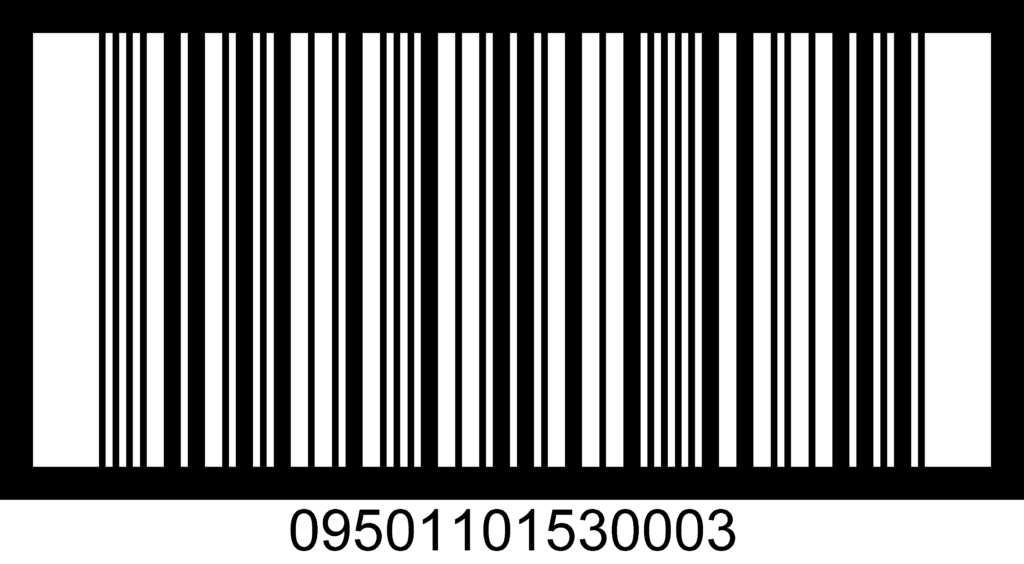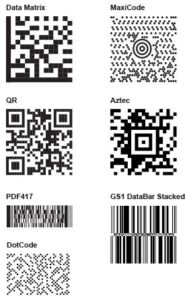
Barcode Scanning - An Overview
An efficient warehouse needs a well-organized inventory management system that uses barcode scanning systems. Customers expect warehouse operations to be more efficient and effective to provide competitive pricing and reduce errors, that can be enabled using warehouse barcode systems. Manual inventory management cannot meet these customer needs. It is impossible to survive in a fast-paced environment without a system where data flows with accuracy and speed by using a barcode scanner in warehouse.
Warehouse barcode system allows us to allocate resources efficiently, get the most out of our resources, and boost worker productivity all at once. It also gives everyone the ability to adapt to external events that are outside our control.
History
The concept of the barcode scanning system — an alphabet made up of thick and thin bars — came into being in 1951 but wasn’t commercially successful until the 70s. It took another quarter of a century for one to be printed on product Packaging Material In A Warehouse and scanned. The right barcode scanning warehouse can help in streamlining the supply chain and use data to improve operational efficiency because connected supply chains with physical and digital elements working together prove to be much more efficient in adapting to changing conditions and needs.
Since it came into widespread use, the warehouse barcode scanner has become a standard tool in warehouse and retail management, helping businesses keep track of inventory, determine when to restock and intelligently manage overall operations. Today there are hundreds of different types of barcodes, each with unique strengths and limitations. Once used for simple code reading, barcodes scanning warehouses have now become a way to marry the storage and movement of goods with the global information infrastructure.
A barcode scanning warehouse consists of both hardware and software. The software, which is part of the warehouse management system (WMS), can help you control inventory, pick and pack orders, and ship products. When you scan a product’s barcode, the warehouse barcode software updates your inventory and ensures that your employees are picking the correct product for the order.
What are Barcodes?

- Barcodes are machine-readable codes represented visually as numbers and parallel black-and-white bars
- The combination of black and white bars (also referred to as elements) represents varying text characters that follow a pre-established algorithm for that barcode (more on the types of barcodes later)
- When scanned by the laser beam of a barcode scanner, these symbols produce a unique digital codeWarehouse barcode scanner are affixed to products and are associated with them to identify and distinguish them from each other
- Barcode scanners in warehouse can also track the location of items in the warehouse, which is especially important in large warehouses where items may be stored in different places.
- Warehouse barcode systems are used to improve efficiency, Warehouse Location Accuracy, and visibility.
- Warehouse barcode scanner allows you to tag each warehouse location, rack, pallet, and container with a barcode label. This makes it easy to scan items and track Inventory Cycle Counts and inventory transfers between departments or locations.
How do they work?
- A barcode scanner (also referred to as a barcode reader) is a device that captures and decodes the information contained by a barcode
- Traditional barcode scanners consist of the following four components:
- Light source: This helps the barcode read and accurately decode the information contained.
- Lens: This scans the barcode.
- Photoconductor: This translates optical impulses into electrical ones.
- Decoder: This analyzes the barcode’s data and sends it to the output port of the scanner
- They then link to a host computer or tablet and transmit that information in real time, without additional human intervention.
- This helps retailers automate data collection processes and reduce human errors like inventory tracking and processing PoS transactions.
Warehouse Accuracy: Master the Cycle Count Process
What information can a barcode include?
There are generally four different types of character sets:
- Numeric — includes numbers only (0-9)
- Alpha-numeric — includes numbers and alphabetic characters (0-9 and A-Z)
- GS1 AI encodable character set 82 — includes numbers (0-9), alphabetic characters (A-Z), and special characters
- Full ASCII — includes any ASCII character (value 0-127)
Types of Barcodes

1D Barcodes
- A 1D barcodes scanner in warehouse is a series of black and white bars that can store information like a product’s type, size and color.
- 1D barcodes can be found on the top of universal product codes (UPCs) of a product’s packaging.
- This helps track packages through delivery service providers like UPS and FedEx, DHL Etc.
- The 1D barcode scanning system is the most used and is especially used in retail stores for product labeling.
- In addition, they are also used in the warehouse industry for marking locations and bins.

2D Barcodes
- 2D barcodes scanning systems are more complex than 1D barcodes.
- The 2D barcode can contain up to 100 times as much information as the 1D barcode as well as more complex information such as links and pictures.
- They are used, among other things, for labeling medical products, downloading apps, sharing information to consumers by placing the codes on advertisements on the bus or on standers in the city etc.
- 2D is not yet widely used in retail.


1D vs 2D Barcodes - Pros & Cons
1D Barcode
Pros
- Barcode scanner in warehouse technology is simpler, more affordable, and tends to be fast due to simplicity of the codes.
- Print quality doesn’t need to be sharp meaning any inkjet or newer printer can produce functional barcodes.
- Integration with 1D barcode software is generally easy.
- 1D scanners have strong motion tolerance and a long range.
- They are a common sight in the public consciousness and usage.
- Rapid encoding/decoding due to their simplicity.
- Codes often work even if damaged (as long as a complete horizontal sample of the code is present somewhere on its surface).
2D Barcode
Pros
- They take up much less area per volume of data they can store.
- These barcodes can be read from any angle.
- They can store quite a bit more local data.
- They can store more types of data, which, among other things, can add to security if the data is encrypted on top of being encoded.
- Many of these can be scanned by a greater range of devices.
Cons
- Requires access to an external database in order to decode their meaning.
- 1D barcodes sometimes have compatibility issues with newer scanning software.
- There is a severe limit to the data storage capacity of these barcodes.
- New scanners using optical recognition (a requirement for many 2D codes) have hard time scanning these codes.
Cons
- These can be difficult to read if multiple 2D barcodes appear close together.
- Using optical recognition rather than lasers most of the time necessitates a far sharper printer.
- They can be slower to scan, requiring the camera to auto-focus
- They require some training and steady, patient hand due to the slower optical nature of the hardware.
Merits of Barcode Scanning
- Tracking & Inventory Management
Manufacturers and distributors can expedite the fulfilment process using barcode scanning. A single barcode provides instant access to a large amount of data, including how a box should be packed or where on the warehouse floor it should be routed. The same barcode connects workers and truck drivers to manage paperwork, track when and where, and manage inventory more efficiently.
- Enhancing accuracy
Redundant information and error corrections can be made in real time even if a package suffers damage or a label is destroyed.
- Improving Transparency in the Process
With granular visibility into the supply chain, there is more transparency to meet regulatory requirements. Tracing products becomes more efficient and possible using barcode scanning technology. Through inventory location, one can see what products were stored at which place. Barcode scanning tracks the employee number/date/time stamp for every transaction, including sales, returns, adjustments, and transfers. The two technologies lock down accuracy to 99.9% or higher.
- Inexpensive and increased mobility
Warehouses, which do not use barcodes for scanning and data capture, are very manual and require office personnel or warehouse employees to key all warehouse activity documents, such as receipts, inventory transfers between locations, cycle and physical counts, and returns.
Wireless scanners connected to the WMS allow data capture where the inventory is — on receiving docks, on pallet racks, in receiving, and in shipping.

|
|
Thank you for Signing Up |









